
Shall the words not sing of sorrow
Leave for others words of lament
The label ‘Funeral Doom Metal’ is used to describe a plethora of bands that share a largely fatalistic ideological outlook in common. This is an extreme interpretation of the inherent misery of Doom Metal as a wider movement that dates back to when 70′s bands such as Pentagram and Pagan Altar, and 80′s bands St. Vitus, Candlemass and Cathedral from the early 90′s carried the baton bearing these surface qualities taken from Black Sabbath. It was, later still, passed on to bands best represented by Paradise Lost, My Dying Bride and Katatonia, who integrated this slow and doleful style with Death Metal techniques, as this movement had reached it’s apex in the remarkable ‘goldmine’ period (1989 – 1993). This style called Doomdeath would eventually become more extreme, spawning suicidal and eschatological Funeral Doom Metal bands such as Mournful Congregation, Paramaecium, Worship and Pantheist. They would claim more of a descent from the band most synonymous with the tag: Finland’s Skepticism, however, whose consistancy and contribution to Metal music as a whole far outweighs their status as the archetypal form of some sub-sub-genre. Emerging almost simultaneously from the South of Finland, both Skepticism and Thergothon were playing music less concerned with the self-obsessed emotions of Doom Metal; infact, they followed more in the footsteps of Death and Black Metal, illustrating their reverence for nature/cosmos, it’s eternal patterns and magestic forces that confront our fragile and often illusory perceptions (and feed the despair of most Doom Metal in it’s fatalism).
This appropriately brings us to the annual ‘Dooomstock’ festival held at the Lepakkomies bar in the Sörnäinen district of Helsinki. More importantly, it brings us to Skepticism’s role not only as headliner, but the most uncompromising example of what has been discussed so far: that Skepticism – who bring the epic spirit of Romantic, nihilistic Metal to the Doom scene – reign supreme in a sea of shit. It’s the second day of the festival, and the opening act – Funeral Planet – amounted to little more than an extremely heavy and slow Rock band, which is the most unfortunate symptom of this kind of Black Sabbath worship. Thanks to the trial-and-error, improvisational nature of Rock composition, one or two riffs could be enjoyed but, without some meaningful musical context, only as a soundtrack to consuming bottles of Karhu – Finland’s premium lager. The Celtic Frost cover was a nice addition to the set but only served to increase the anticipation for Skepticism by hearing the work of another legendary band. Such an honourable title, the Finns in attendance would tell you, couldn’t be more applicable to the country’s original Doom Metal band and second act on the line-up: Spiritus Mortis, now being fronted by Sami Hynninen who is more well-known as Albert Witchfinder from Reverend Bizarre. Their brand of traditional Doom Metal is more competent than the preceding act, in that their sound hybridizes a wider range of influences, from Trouble and St. Vitus to the somehow rousing dirge-anthems of Pagan Altar and post-Nightfall Candlemass. But was there more to the set than a collection of tightly-played tribute songs for a diehard group of Finnish Doom Metal connoisseurs? Beside’s Sami’s enthusiasm for singing to his own band within this lot of fans, in a voice more suited to Spiritus Mortis than to a bizarre cover of Burzum’s ‘Dunkelheit’, the answer would be that there was no more meaning. The next band, Ophis from Germany represented the new generation of Doomdeath bands, and delivered almost as promised, a juvenile set of clichéd tracks that rip-off the approach played first by diSEMBOWELMENT and littered this with token chugging lifted from the cruder moments of Worship’s first album. Ending the set with a cover of a band that nobody had heard of planted Ophis solidly into the grave, but it did feature a lot more of that chugging which is ambrosia for the Doom Metal fan, as shredding is for speed-addicts.
With all of this noise done and dusted, the stage was set for the mighty Skepticism, and those who seemed to have better understood the significance of what would come made their way to the feet of the masters. Skepticism’s image is about as disparate from their peers’ as their music is, with the band maintaining a strictly non-Metal sartorial code, led by Matti on vocals and his dishevelled conductor’s suit. The set began with an awe-inspiring and trance-inducing rendition of the classic ‘Sign of a Storm’, opener to the debut album. The opening words are growled more chthonically than on record, accompanied by Matti’s gestures as he appears to summon and conduct the elemental forces of nature, explaining his customary choice of attire. His performance as vocalist is in sharp contrast with Sami’s; his actions are erratic extensions of a music which is greater than himself and, though he is aware of the audience, knows his role as mediator at all times. In the basic element of sound, Skepticism sound more like a coherent whole rather than an unbalanced loudspeaker for an isolated riff, some crowd-friendly chugging or double-bass layer. The next song, as the tracklist of the Stormcrowfleet album dictates is ‘Pouring’ and demonstrates the brutal harmony of their sound. None of their coherence is sacrificed as the set enters the classic ’Aether’ from the second album, which creates a lot more ambient space and dynamic demands that are delivered expertly. ‘The Curtain’ and ‘The Arrival’ from the latest album, Alloy follow to demonstrate the quality music that Skepticism is still creating – a very rare phenomenon in the world of Metal. Next came two tracks that, while enjoyable, explain why ’Farmakon’ was such a hit-and-miss affair. The riffs are quite cumbersomely arranged, but with their characteristic power and glimpses of innovation, Skepticism drive them forward regardless. To close, nothing could have been a more fitting choice of song than the epic ‘March October’ as the band returns to ‘Alloy’ one last time. What a gift to leave behind for the audience to be inspired – sonic patterns of the continuum of life. The epic Skepticism transcended the Doom Metal festival in every aspect of their music and performance, and this is what, perhaps paradoxically, makes a Metal band great; by letting the form of the music be shaped and directed by the fundamental impulses that inspire it, like the sea upon the coming of a storm.
-ObscuraHessian-
Proudly join the tunes sounding
Gallant ways the pulse beating
Take their place in the Alloy
Fortify the compound forming
And unite the substance growing
And meld matter made for lasting
To complete the March October
Tags: Death Metal Live Reviews, Death Metal Live Shows, Death Metal Show Announcements — Tags: Death Metal, Doom Metal, Finnish Death Metal, Heavy Metal
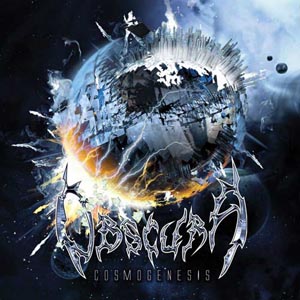



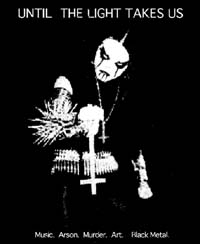 If we ask why instead of how an event happened, we find out what made the humans behind it do as they did. “Until the Light Takes Us” explores the why of early 1990s Norwegian black metal. Designed for people with no knowledge of that subculture, the film explains the black metal movement while making its actors emotionally accessible so we feel an urge to understand it. In a time of a sudden interest in metal documentaries, this film stands out by exploring the personalities and ideals that made people invent the music; other films look at the facts of how the music was invented but never the why. We don’t need another documentary telling us millions of people worldwide go crazy for heavy metal so it’s OK if we want to as well. We need to figure out what makes people pick this genre over every other. “Until the Light Takes Us” gets into the why of black metal and the church arsons, murder and media circus that followed. Through fragments of media footage, interviews, and footage of black metal musician Fenriz as he prepares to visit an art exhibit about black metal, this film explores the clash between fantasy and utilitarian modernity that sparked the radicalization of heavy metal. At its culmination, the documentary shows past colliding with present, and a fervent ideal of being against the modern world and believing in a mythic life full of fantasy, adventurous violence and conflict. It is both poignant and literal, like black metal a collision of alienated punk gumption and epic dreams. Like black metal, this film is a study of moods, overlapping in translucent layers, which as they are pulled away show us a simple shape of truth. Although some have bemoaned the inclusion of too much Varg or Fenriz, it became clear from other interviews that musicians are not an articulate bunch and the two who get the most screen time do so in part because they can explain themselves coherently. In the case of Varg, he’s easy to watch: he’s funny, sharp, friendly and his logic is lucid. Fenriz is moodier but his dark sense of absurdist humor commands the film. At the core of this genre, Ewell and Aites find a revolution against consumerism, equality, uniformity, utilitarianism and all other modern concepts by 35-year-old teenagers who never gave up on the idea that life should have adventure, constant discovery and a sense of meaning that unites the entire experience. Unlike most people, these individuals are fully aware of what death means, and when contrasted with the robotic plastic surroundings of the modern world, a parallax shift occurs: we go from seeing them as out of place to seeing their surroundings as out of place or perhaps, irrelevant. This film is a cipher, in that it gives us many entry points to a questioning of modern society and exploration of the ideas of black metal. Among other things, it is obsessed with the erasure of memory and culture, an inspection of the culture of convenience and the isolation it brings, and a hint that we should explore what Joseph Campbell calls “mythic imagination” and Varg calls “fantasy.” Without being socially critical, it is an exploration through the eyes of those who made black metal, and then saw it erased as it became a product with the passage of time.
If we ask why instead of how an event happened, we find out what made the humans behind it do as they did. “Until the Light Takes Us” explores the why of early 1990s Norwegian black metal. Designed for people with no knowledge of that subculture, the film explains the black metal movement while making its actors emotionally accessible so we feel an urge to understand it. In a time of a sudden interest in metal documentaries, this film stands out by exploring the personalities and ideals that made people invent the music; other films look at the facts of how the music was invented but never the why. We don’t need another documentary telling us millions of people worldwide go crazy for heavy metal so it’s OK if we want to as well. We need to figure out what makes people pick this genre over every other. “Until the Light Takes Us” gets into the why of black metal and the church arsons, murder and media circus that followed. Through fragments of media footage, interviews, and footage of black metal musician Fenriz as he prepares to visit an art exhibit about black metal, this film explores the clash between fantasy and utilitarian modernity that sparked the radicalization of heavy metal. At its culmination, the documentary shows past colliding with present, and a fervent ideal of being against the modern world and believing in a mythic life full of fantasy, adventurous violence and conflict. It is both poignant and literal, like black metal a collision of alienated punk gumption and epic dreams. Like black metal, this film is a study of moods, overlapping in translucent layers, which as they are pulled away show us a simple shape of truth. Although some have bemoaned the inclusion of too much Varg or Fenriz, it became clear from other interviews that musicians are not an articulate bunch and the two who get the most screen time do so in part because they can explain themselves coherently. In the case of Varg, he’s easy to watch: he’s funny, sharp, friendly and his logic is lucid. Fenriz is moodier but his dark sense of absurdist humor commands the film. At the core of this genre, Ewell and Aites find a revolution against consumerism, equality, uniformity, utilitarianism and all other modern concepts by 35-year-old teenagers who never gave up on the idea that life should have adventure, constant discovery and a sense of meaning that unites the entire experience. Unlike most people, these individuals are fully aware of what death means, and when contrasted with the robotic plastic surroundings of the modern world, a parallax shift occurs: we go from seeing them as out of place to seeing their surroundings as out of place or perhaps, irrelevant. This film is a cipher, in that it gives us many entry points to a questioning of modern society and exploration of the ideas of black metal. Among other things, it is obsessed with the erasure of memory and culture, an inspection of the culture of convenience and the isolation it brings, and a hint that we should explore what Joseph Campbell calls “mythic imagination” and Varg calls “fantasy.” Without being socially critical, it is an exploration through the eyes of those who made black metal, and then saw it erased as it became a product with the passage of time.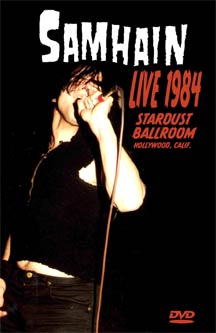 This hand-filmed, single-camera narrative documents a time when underground music was still struggling to find its path, and while the quality may not be that of a slick professional recording, the delivery of the band is captured in as much detail as is needed. The sound, when it is not cutting out, is good and separation between instruments and vocals can be heard clearly. Glenn Danzig is an energetic vocalist without either the jaded reserve or overindulgent showmanship of later years, and the crowd looks shellshocked and unsure of what they’re seeing, which has the advantage of them doing fewer stupid things to mar enjoyment of the performance. The band are economical with their onstage motions, and tight in their playing, which gives these songs the same power they have coming off of a CD. An enclosed sticker provokes some nostalgia for the time, an age of xeroxed posters and grimly absurd art, of people gathering in long-forgotten clubs to bash out violent performances. For those who like what Samhain were about, this DVD is everything that could be desired from this foundational band.
This hand-filmed, single-camera narrative documents a time when underground music was still struggling to find its path, and while the quality may not be that of a slick professional recording, the delivery of the band is captured in as much detail as is needed. The sound, when it is not cutting out, is good and separation between instruments and vocals can be heard clearly. Glenn Danzig is an energetic vocalist without either the jaded reserve or overindulgent showmanship of later years, and the crowd looks shellshocked and unsure of what they’re seeing, which has the advantage of them doing fewer stupid things to mar enjoyment of the performance. The band are economical with their onstage motions, and tight in their playing, which gives these songs the same power they have coming off of a CD. An enclosed sticker provokes some nostalgia for the time, an age of xeroxed posters and grimly absurd art, of people gathering in long-forgotten clubs to bash out violent performances. For those who like what Samhain were about, this DVD is everything that could be desired from this foundational band.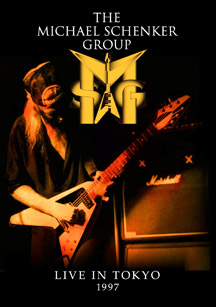 Despite the cheesy low-budget titles which preceded the actual performance, this video is quite competent. Video quality is high, color balance is good, and sound is as near to pristine as one can get through this medium. The problem is that it is filmed like a Bon Jovi live set, with too much focus on the vocalist and a total shortage of the crucial closeups of guitar playing that should accompany performances by people renowned for their instrumental ability. Is that rocket science, or what? We get plenty of wide-stage views and frontal closeup of “emotional” moments during the singing, but a fault of tight shots and creative angles. Tastefully the filmmakers avoid too much crowd interaction, which is smart since if one’s best qualification is having bought a ticket, it is probably not a sign that one has much to say/gesture of note. For this reviewer, the music on this DVD was too much of the hard rock variety, but it is clear that the performers are highly talented and it is hoped that with their next video release, there will be more focus on things of interest to musicians or people who simply admire classic guitar playing.
Despite the cheesy low-budget titles which preceded the actual performance, this video is quite competent. Video quality is high, color balance is good, and sound is as near to pristine as one can get through this medium. The problem is that it is filmed like a Bon Jovi live set, with too much focus on the vocalist and a total shortage of the crucial closeups of guitar playing that should accompany performances by people renowned for their instrumental ability. Is that rocket science, or what? We get plenty of wide-stage views and frontal closeup of “emotional” moments during the singing, but a fault of tight shots and creative angles. Tastefully the filmmakers avoid too much crowd interaction, which is smart since if one’s best qualification is having bought a ticket, it is probably not a sign that one has much to say/gesture of note. For this reviewer, the music on this DVD was too much of the hard rock variety, but it is clear that the performers are highly talented and it is hoped that with their next video release, there will be more focus on things of interest to musicians or people who simply admire classic guitar playing.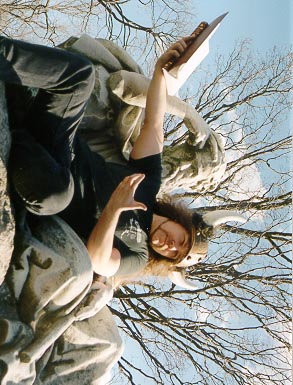 For the first video review to ever grace these pages a film was chosen that is valuable for the conclusions gleaned from its perception, and not necessarily the art of moviemaking exhibited. Following the pattern of most first films, this work starts with a group of characters and mocks them in their ouroboric paths to nowhere. In doing so, it reveals something of the nature of the metal community itself, both through its dominant symbols – drugs, masturbation, anger, fatalism – and through its own fascination and the conclusion it is able to draw. Shot in conveniently sparse videocam, the movie romps through a series of goofy but enjoyable skits and long derangements of the senses synchronized in form to music, giving it the feeling of a music video + home video + low-budget film in one. Of note are musical choices, which showcase a DJ’s eye for context. There is ample T&A of a tame variety and gratifying indulgence in all forms of base humor, including masturbation, fecalism and amusing violence. Highlights include a series of blown-out female characters who are preachy but have the sexual ethics of a Grimoire Girl(tm), a fantastically fascist cop played by Craig Pillard, and several utterly believable stoner/metalhead characters who wander around in a haze of mostly their own creation. Absent is any moralism regarding the world around us; it is nice to escape that moralistic confine in which most contemporary filmic art is launched. Another highlight is “Ox,” who barges his way onto the set and provides one of the most believable character satires of pure rampaging destruction in human form yet found. Toward the beginning and end of the film, when it needs extra impetus, there is booster rocket material from what are now basic digital editing effects, which to the director’s credit are often quite cleverly applied (“making the most of what you have”). Is the movie “good”? No and yes. It’s hard to sit through some of this; the scenes are long and often tediously embarrassing to the degree that sympathy is lost for the characters and even the joke. As a whole, the plot is light, with three or four major devices and a linear narrative based on its precepts. It’s sometimes difficult to watch from a combination of ineptitude and padding. However, it is “good” in that this movie has a large amount of perceptive content for a cut-up laugh fest, and while its methods and often gags are cheap and sometimes predictable, they’re carried out with a unique flair and nurture for the humor involved. Like any modern comedy, the plot is a container for almost granularized skits woven roughly into the context of the people who drive changes in the action, and this approach works for the scattershot method required to address the diverse complexity of intellectual representation of external reality in this era. The acting isn’t great, but Zebub himself is a high-energy riot of comedic momentum who can be witty in a pinch, or subtly humorous over the length of a scene. His supporting cast perform well compared to many card-carrying actors and, while like in the movie itself we can see rough edges there are imperfections galore, they link up in the film like prisoner sex. While this movie gets a somewhat ambivalent recommendation, the idea of pursuing the next professional offering from Bill Zebub is not at all ambiguous to this reviewer.
For the first video review to ever grace these pages a film was chosen that is valuable for the conclusions gleaned from its perception, and not necessarily the art of moviemaking exhibited. Following the pattern of most first films, this work starts with a group of characters and mocks them in their ouroboric paths to nowhere. In doing so, it reveals something of the nature of the metal community itself, both through its dominant symbols – drugs, masturbation, anger, fatalism – and through its own fascination and the conclusion it is able to draw. Shot in conveniently sparse videocam, the movie romps through a series of goofy but enjoyable skits and long derangements of the senses synchronized in form to music, giving it the feeling of a music video + home video + low-budget film in one. Of note are musical choices, which showcase a DJ’s eye for context. There is ample T&A of a tame variety and gratifying indulgence in all forms of base humor, including masturbation, fecalism and amusing violence. Highlights include a series of blown-out female characters who are preachy but have the sexual ethics of a Grimoire Girl(tm), a fantastically fascist cop played by Craig Pillard, and several utterly believable stoner/metalhead characters who wander around in a haze of mostly their own creation. Absent is any moralism regarding the world around us; it is nice to escape that moralistic confine in which most contemporary filmic art is launched. Another highlight is “Ox,” who barges his way onto the set and provides one of the most believable character satires of pure rampaging destruction in human form yet found. Toward the beginning and end of the film, when it needs extra impetus, there is booster rocket material from what are now basic digital editing effects, which to the director’s credit are often quite cleverly applied (“making the most of what you have”). Is the movie “good”? No and yes. It’s hard to sit through some of this; the scenes are long and often tediously embarrassing to the degree that sympathy is lost for the characters and even the joke. As a whole, the plot is light, with three or four major devices and a linear narrative based on its precepts. It’s sometimes difficult to watch from a combination of ineptitude and padding. However, it is “good” in that this movie has a large amount of perceptive content for a cut-up laugh fest, and while its methods and often gags are cheap and sometimes predictable, they’re carried out with a unique flair and nurture for the humor involved. Like any modern comedy, the plot is a container for almost granularized skits woven roughly into the context of the people who drive changes in the action, and this approach works for the scattershot method required to address the diverse complexity of intellectual representation of external reality in this era. The acting isn’t great, but Zebub himself is a high-energy riot of comedic momentum who can be witty in a pinch, or subtly humorous over the length of a scene. His supporting cast perform well compared to many card-carrying actors and, while like in the movie itself we can see rough edges there are imperfections galore, they link up in the film like prisoner sex. While this movie gets a somewhat ambivalent recommendation, the idea of pursuing the next professional offering from Bill Zebub is not at all ambiguous to this reviewer.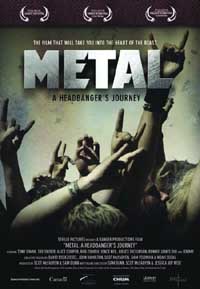 I just saw this at the Alamo Drafthouse, and I was surprised at how much I enjoyed it. It is probably the most watchable movie on the topic thus far, as it actually has a budget and properly addresses the many subgenres. It stays focused on the more populist bands (Wacken is a prominent setting) but I find that getting into all the underground minutiae bottoms out these days because whether people are motivated by commerce or popularity, the effect on the music is just as deletrious. Sam Dunn, the filmmaker, is a contemporary of the 1980s metal (30-ish, grew up on thrash and death metal, cites Autopsy as one of his favorite bands) so it is worth supporting and good fun. The interview with Gaahl and then Dio repeatedly ripping on Gene Simmons are worth the price of admission.
I just saw this at the Alamo Drafthouse, and I was surprised at how much I enjoyed it. It is probably the most watchable movie on the topic thus far, as it actually has a budget and properly addresses the many subgenres. It stays focused on the more populist bands (Wacken is a prominent setting) but I find that getting into all the underground minutiae bottoms out these days because whether people are motivated by commerce or popularity, the effect on the music is just as deletrious. Sam Dunn, the filmmaker, is a contemporary of the 1980s metal (30-ish, grew up on thrash and death metal, cites Autopsy as one of his favorite bands) so it is worth supporting and good fun. The interview with Gaahl and then Dio repeatedly ripping on Gene Simmons are worth the price of admission.
